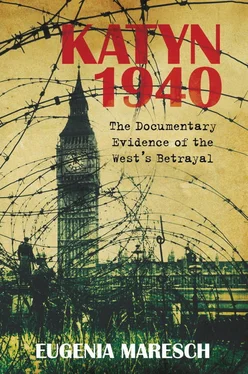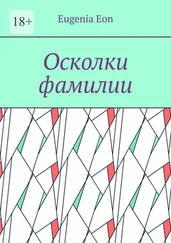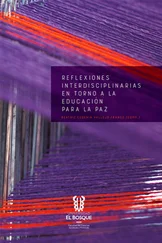I have the honour to be, with the highest respect Sir Your most obedient, humble Servant Owen O’Malley
Annex I (paragraph 2)
A list of 49 names and the ranks of missing officers, passed to O’Malley by his Polish contacts. [16] TNA FO 688/31/9 enclosure I in O’Malley’s despatch No. 51 of May 24 1943.The list contains 49 names and rank of missing officers, as well as names of relatives in the UK.
[Not reproduced]
Annex II (paragraph 10)
List of personnel composing the Commission of criminologists and pathologists.
Dr [Reimond] Spoleers, Professor of Opthalmology at the University of Ghent.
Dr [Vladimir] Markov, Instructor in Forensic Medicine and Criminology at the University of Sofia
Dr [Helge] Tramsen, Assistant Professor of Anatomy at the Institute for Forensic Medicine in Copenhagen.
Dr [Arno] Saxen, Professor of Pathological Anatomy at the University in Copenhagen.
Dr [Vincenzo] Palmieri, Professor of Forensic Medicine and Criminology at the University of Naples.
Dr [Edward] Miloslavich, Professor of Forensic Medicine and Criminology at the University of Agram.
Dr [H. M.] de Burlet, Professor of Anatomy at the University of Troningen.
Dr [Francisek] Hajek, Professor of Forensic Medicine and Criminology in Prague.
Dr [Alex] Birkle, Coroner of the Rumanian Ministry of Justice and First Assistant at the Institute of Forensic Medicine and Criminology in Bucharest.
Dr [Francois] Naville, Professor of Forensic Medicine at the University of Geneva.
Dr [Francisek] Subik, Professor of Pathological Anatomy at the University of Bratislava and head of the Public Health Service of Slovakia.
Dr [Ferenc] Orsós, Professor of Forensic Medicine and Criminology at the University of Budapest.
Dr [Gerhard] Buhtz, Professor of Forensic Medicine and Criminology at the University of Breslau.
Dr Costedoat Medical Inspector
Enclosure
Despatch No. 52 Most Secret, 24 May 1943 [17] TNA FO 371/34577/ C6161 C6160/258/55 Secure Signal 1943 May 15, from the underground organisation in Warsaw. Unauthorised copy obtained by O’Malley from his ‘contacts’ without prior knowledge of the Polish government-in-exile and asked by O’Malley to be treated as ‘particularly secret’; SPP Studium Polski Podziemnej (Polish Underground Movement Trust) in London, ref. A.7.1.1.The original signal in Polish L.dz. 2290/tjn 43, Radiogram No. 779, Wanda 6, 13 5 43, deciphered 14 5 43 1030, despatched by ‘Kalina’ (Gen. Stefan Rowecki, head of AK) indicating the source of information as Dr Adam Schebesta of the PCK. In point 7 of the report, a sentence was intentionally omitted in translation by Lt Col Protasewicz, head of Oddział VI (the VI Bureau), before being passed onto O’Malley; as indicated, it should have read ‘All bullets are of 7.65 calibre, shells bear inscription Geco, the ropes are of twisted variety’.
1. At the foot of a hillock is the ‘L’ shape mass grave, which has been completely opened up. Its dimensions are: 16 x 26 x 6 metres. The bodies of the murdered men have been carefully arranged in from 9 to 12 layers, one on the top of another, each layer with the heads laid in opposite directions. The uniforms, notes in the pockets, passports and decorations are well preserved. The skin, hair and tendons have remained in such a good state that in order to carry out the trepanning it was necessary to cut under the skin and tendons. The faces were however unrecognisable.
2. Perpendicular to the first grave is a second mass grave, which up to now has only been partially opened up. Its dimensions are 14 x 16 metres. All the bodies in this grave have the hands tied behind them with a plait of string: in some cases the mouths have been gagged with handkerchiefs or rags: in some the head has been wrapped round with the skirts of an overcoat.
3. Up to now 906 bodies have been extracted, 76 per cent of which have been identified on the strength of passports, letters etc found on them.
4. It is presumed that in the two graves together there lie the bodies of from 2,500 to 4,000 officers: in only a few cases are they reserve officers in civilian dress.
5. Twelve persons, including one doctor and three non-commissioned officers of an ambulance unit, were present on behalf of the Polish Red Cross when the graves were opened up, the bodies identified and the documents found on them collected.
6. A characteristic feature is that nothing except watches has been removed from the murdered men: notebooks, money and papers are still in their pockets: sometimes rings are still on the fingers.
7. All the bodies have a bullet wound in the back of the skull. The representatives of the Polish Red Cross who were present at the exhumation took pains to collect the bullets extracted from the heads of the murdered men, the revolver shells and ammunition lying in the mass graves as well as the cords with which the hands of the murdered men had been tied. The entire material found was sent to the Polish Red Cross in Warsaw for Dr. Gorczycki. [All bullets are of 7.65 calibre, shells bear inscription Geco, and the ropes are of twisted variety. Sentence omitted]
8. In the presence of the author of this report, there was taken from the clothing of Major Solski a diary written up to April 21st. The writer of the diary stated that from Kozelsk they were taken in prison vans to their destination, then taken to Smolensk where they spent the night: reveille was sounded at 4 a.m. and they were placed in prison motor cars. At a clearing in the forest they were turned out of the motorcars and at 6.30 taken to some buildings there, they were told to give up their jewellery and watches. At this point the diary ends.
9. Under the supervision of the German authorities the Delegate of the Polish Red Cross is carrying out the exhumation and autopsies, besides collecting the papers. He has moreover established private contact with the local population. Whenever the body is identified a small tablet with a Red Cross number is attached to the bones. Afterwards all the bodies are put into a freshly dug, common grave. All of the officers identified were from Kozelsk with the exception of one from Starobelsk.
10. The clearing in the forest at Katyn covers several square kilometres: on it there used to be NKVD rest houses. The local civilian population states that in March and April 1940 one transport of Polish officers to the number of from 200 to 300 used to arrive every day.
Annex III (paragraph 10)
Katyn Wood : Text of Protocol: Berlin
The report of the International Commission of scientists on the examination of mass graves at Katyn Wood in the main section reads as follows:
From the 28th April to the 30th April 1943, a Commission composed of leading representatives of forensic medicine at European Universities and other prominent University professors of medicine have conducted a thorough scientific examination of the mass graves of Polish officers in Katyn wood.
The discovery of those mass graves, which was recently brought to the attention of the German authorities, prompted Reich’s Chief Health Officer, Dr [Leonard] Conte, to invite experts from various European countries to inspect the Katyn site in order thus to contribute to the clarification of this unique case. Members of the Commission personally heard the testimonies of several Russian native witnesses who, among others, confirmed that during the months of March and April, 1940, almost daily big railway transports with Polish officers arrived at the station of Gnesdovo, near Katyn, where the Polish officers alighted and were then transported in a prisoners motor van to Katyn wood and were not seen again; The Commission further took cognisance of the discoveries and facts thus far established and inspected objects of circumstantial evidence.
Читать дальше












